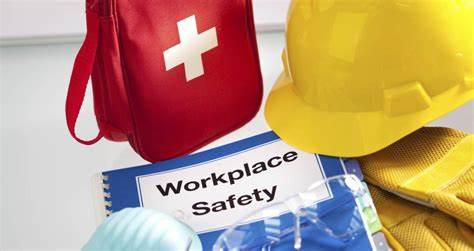In the dynamic landscape of modern workplaces, ensuring the health and safety of employees is paramount. A commitment to workplace health and safety not only safeguards the well-being of employees but also contributes to increased productivity, reduced absenteeism, and enhanced organizational reputation. In this blog, we will delve into the importance of workplace health and safety, key components of a comprehensive approach, and the benefits it brings to both employees and employers.
The Importance of Workplace Health and Safety:
A safe and healthy work environment is the foundation of a thriving and sustainable workplace. Beyond mere compliance with regulations, prioritizing health and safety fosters a culture of care and responsibility. Employees who feel secure in their work environment are more likely to be engaged, motivated, and loyal to their organizations.
Safety concerns can range from physical hazards to psychological well-being. Identifying and mitigating risks in areas such as ergonomics, equipment maintenance, and emergency preparedness are crucial. Additionally, addressing mental health issues through employee assistance programs and stress management initiatives is now recognized as an integral part of a holistic workplace health and safety strategy.
Components of a Comprehensive Approach:
1. Risk Assessment and Mitigation:
Conducting regular risk assessments is the cornerstone of any effective health and safety program. Identifying potential hazards and implementing measures to mitigate risks, whether they be physical, chemical, or biological, is crucial. This includes routine inspections, hazard communication, and clear protocols for reporting and addressing safety concerns.
2. Employee Training and Education:
Ensuring that employees are well-informed about safety protocols is essential. Regular training sessions on emergency procedures, proper equipment usage, and preventive measures create a workforce that is not only aware of potential risks but also equipped to respond effectively.
3. Ergonomics and Wellness Programs:
Addressing the physical well-being of employees goes beyond immediate safety concerns. Designing workspaces with ergonomics in mind reduces the risk of musculoskeletal disorders and enhances overall comfort. Implementing wellness programs that promote physical activity, healthy eating, and stress management contribute to a healthier and more resilient workforce.
4. Emergency Preparedness:
Every workplace should have robust emergency plans in place. This includes fire evacuation procedures, first aid training, and communication protocols. Regular drills and simulations help ensure that employees are familiar with emergency procedures and can respond effectively in crisis situations.
5. Mental Health Support:
Recognizing the importance of mental health in the workplace is a relatively recent but critical development. Employers should provide resources and support for employees facing mental health challenges. This can include access to counseling services, stress management workshops, and destigmatizing mental health discussions within the organization.
Benefits for Employees and Employers:
1. Reduced Absenteeism:
A safe and healthy workplace is associated with lower rates of absenteeism. When employees feel secure in their work environment, they are less likely to take sick leave or experience work-related injuries, leading to increased productivity and continuity of operations.
2. Enhanced Productivity:
A focus on health and safety positively impacts productivity. By minimizing workplace accidents and injuries, organizations can maintain a consistent and efficient workflow. Moreover, when employees are physically and mentally well, they are more likely to be engaged and contribute positively to their work.
3. Improved Organizational Reputation:
Companies that prioritize the well-being of their employees build a positive reputation. This can be a significant factor in attracting top talent, as potential employees are increasingly considering workplace health and safety as a crucial aspect of their job search.
4. Legal and Financial Benefits:
Compliance with health and safety regulations is not just a moral obligation but also a legal requirement. Organizations that prioritize workplace health and safety are better positioned to avoid legal issues and financial penalties associated with non-compliance.
In conclusion, workplace health and safety are integral components of a successful and sustainable organization. By adopting a comprehensive approach that addresses physical and mental well-being, organizations can create a culture of safety that benefits both employees and employers. The investment in health and safety programs not only safeguards the workforce but also contributes to increased productivity, reduced absenteeism, and a positive organizational image in the long run.







